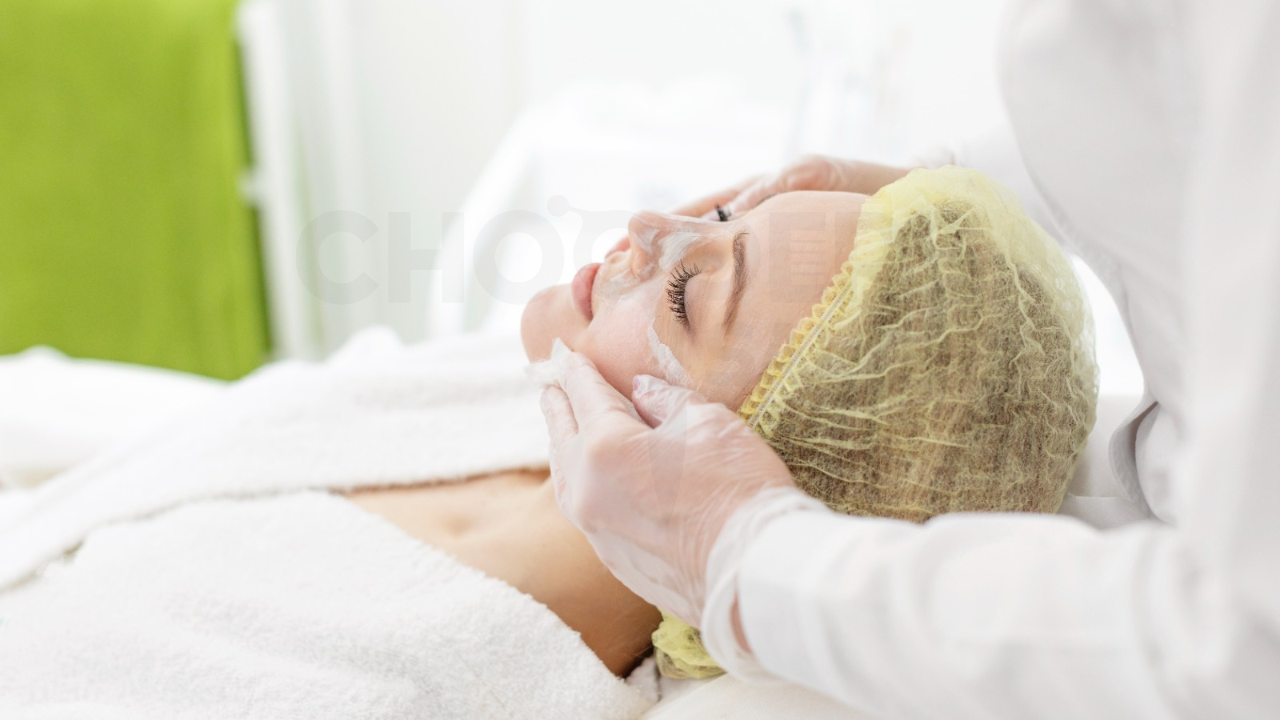Introduction:
Chemical peels have long been proclaimed as a transformative skincare treatment, especially useful for those with acne-prone skin. By utilizing different acids to exfoliate the beat layers of the skin, chemical peels can offer assistance in diminishing skin breakouts, avoiding future breakouts, and progressing the general surface and tone of the skin. This web journal investigates the best hones to utilize chemical peels to oversee and treat acne-prone skin effectively.
Understanding Chemical Peels
Chemical peels work by applying a chemical arrangement to the skin, which causes the best layers to exfoliate and inevitably peel off. This preparation uncovers unused, recovered skin that is regularly smoother and less influenced by skin breakouts. The three essential sorts of chemical peels—superficial, medium, and deep—vary in concentration and are chosen based on the reality of skin break out and the skin sort. Shallow peels, as often as possible made with alpha-hydroxy acids (AHAs) like glycolic destructive or beta-hydroxy acids (BHAs) like salicylic destructive, are most commonly utilized for acne-prone skin due to their delicate in any case practical nature.
Choosing the Right Peel for Acne-Prone Skin
Selecting the fitting chemical peel is pivotal for accomplishing the best comes about. For acne-prone skin, shallow peels with salicylic corrosive are exceedingly suggested. Salicylic corrosive, a BHA, is oil-soluble and can enter profound into the pores to clear out sebum and dead skin cells, which are the essential causes of skin breakout. Glycolic corrosive, an AHA, is very useful as it exfoliates the skin surface, making a difference to diminish the appearance of skin break-out scars and moving forward skin surface. Counseling with a dermatologist or skincare proficient can offer assistance decide the best peel sort and concentration for your particular skin concerns.
Preparing Your Skin for a Chemical Peel
Proper arrangement is basic for maximizing the benefits of a chemical peel and minimizing potential side impacts. Start by suspending the utilization of any retinoids or other exfoliating items at slightest one week sometime recently the treatment to decrease the chance of aggravation. Moreover, dodge sun presentation and tanning beds to avoid post-inflammatory hyperpigmentation. Cleansing the skin altogether on the day of the peel is moreover vital to guarantee that the chemical arrangement can enter effectively.
The Chemical Peel Procedure
During the method, the chosen chemical arrangement is connected to the skin and cleared out for a particular length, depending on the sort and quality of the peel. You may encounter a gentle shivering or burning sensation, which is ordinary and shows that the peel is working. After the required time, the arrangement is neutralized and expelled. A few redness and peeling are anticipated in the days taken after the treatment, as the ancient skin layers shed to uncover modern, more beneficial skin underneath.
Post-Peel Care for Acne-Prone Skin
Aftercare is a basic step in the chemical peel handle, particularly for acne-prone skin. Keeping the skin hydrated with a tender, non-comedogenic moisturizer makes a difference in overseeing dryness and peeling. It’s too fundamental to maintain a strategic distance from picking or scratching the peeling skin to anticipate scarring and contamination. Utilizing a broad-spectrum sunscreen day by day is pivotal, as the modern skin is more sensitive to UV radiation. Furthermore, direct clear of any cruel skincare items, such as retinoids or exfoliants, until the skin has completely healed.
Frequency of Chemical Peels
The recurrence of chemical peel medications depends on the sort of peel and the skin’s reaction. Shallow peels can be rehashed each 4-6 weeks, whereas medium and profound peels require longer interims for the skin to recuperate completely. For those with acne-prone skin, customary peels can essentially make strides in the skin’s appearance and diminish the event of breakouts over time. Steady medicines, combined with a great skincare schedule, can offer assistance keep up with the comes about and avoiding future skin break-out flare-ups.
Benefits Past Skin Break out Treatment
While the essential objective of utilizing chemical peels for acne-prone skin is to diminish breakouts, the benefits expand past fair skin breakout administration. Normal peels can upgrade the general skin surface, decrease the appearance of skin break-out scars, and advance a more indeed skin tone. They moreover fortify collagen generation, which can offer assistance move forward skin versatility and decrease fine lines and wrinkles. These extra benefits make chemical peels a profitable treatment choice for those looking to progress their skin’s by and large well-being and appearance.
Conclusion:
Chemical peels can be a game-changer for people with acne-prone skin, advertising a strong arrangement for decreasing breakouts and progressing skin surface. By choosing the right sort of peel, planning the skin appropriately, and taking after-fitting aftercare, you can accomplish noteworthy advancements in your skin’s condition. Continuously counsel with a skincare proficient to tailor the treatment to your particular needs and guarantee the best conceivable results. With customary utilization and legitimate care, chemical peels can offer assistance you accomplish clearer, more beneficial, and more brilliant skin.
FAQs (frequently-asked questions)
A chemical peel is a skincare treatment that uses a chemical solution to exfoliate the top layers of the skin, revealing newer, smoother skin underneath.
Yes, chemical peels are safe for acne-prone skin when performed by a qualified professional. They help reduce acne breakouts and improve skin texture.
For acne-prone skin, superficial peels can be done every 4-6 weeks. However, the frequency depends on your skin type and the severity of your acne.
To prepare, avoid using retinoids or exfoliating products one week before the peel. Avoid sun exposure and cleanse your skin thoroughly on the day of the treatment.
After a chemical peel, you may experience redness, peeling, and dryness. Proper aftercare, including moisturizing and using sunscreen, is essential for healing and optimal results.




